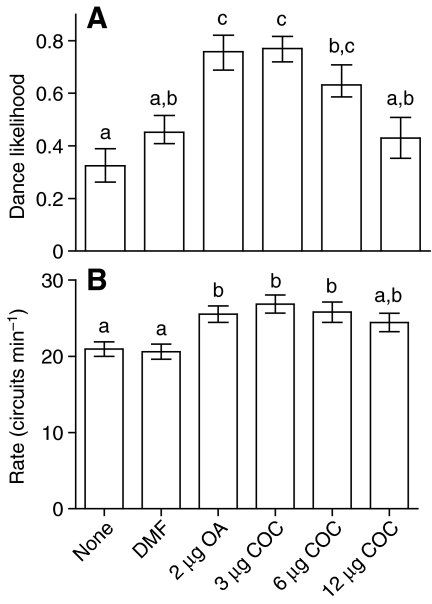Fig. 1.
Effect of cocaine (COC) on the likelihood and rate of round dancing by bees returning from a 1.5 mol l–1 sucrose feeder. Bees were treated with one of three doses of cocaine or octopamine (OA) dissolved in DMF at the feeder. DMF- and sham-treated bees served as controls. N>34 bees per group. Differences between treatment groups were tested with Kruskal-Wallis tests, and comparisons between specific groups were performed using Dunn's post hoc tests. Groups that did not differ (Dunn's post hoc test, P>0.05) are marked by the same letter above the bars. (A) Likelihood of each bee dancing, calculated as the proportion of visits to the feeder that resulted in a dance during the 50-min observation period. Bars represent means and standard error calculated from arcsin-transformed values and consequently are not always symmetrical around the mean. (B) Number of dance circuits per minute. Bars represent means and standard error. Since our statistical comparisons used nonparametric methods, the standard error provides an indication of the distribution of the data but is less indicative of calculated significant differences between groups.

